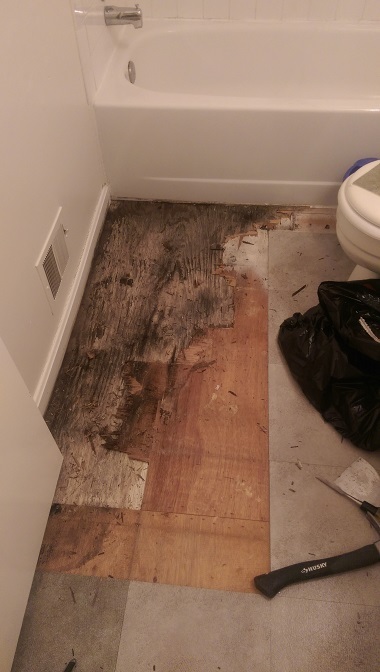Searching for Indications of Water Damage in the Bathroom
Searching for Indications of Water Damage in the Bathroom
Blog Article
Nearly everybody will have their own unique thinking on the subject of Common Causes of Water Damage in a Bathroom.

The bathroom is incredibly susceptible for damp build-up and prospective water damages due to the frequent use of water in it. This post uses straightforward inspection techniques to help discovering water damages dangers.
The constant use water in the washroom makes it extremely vulnerable for moist accumulation and prospective water damage. By examining it frequently, you can minimize water associated problems.
The complying with collection of assessments is simple to carry out as well as ought to be done when in every three months in order to keep your restroom in good shape and to prevent potential water damages brought on by the bath tub, the shower, pipeline joints and also plumbing, sinks, cupboards, as well as the bathroom
Do not overlook performing these inspections and also be complete while doing them. Bear in mind that these easy evaluations can save you a lot of money by giving very early indicators for water damage
Bathtub and Shower
The shower and also bath tub need special attention and also upkeep. Inspect the tiles and also change if broken. Ensure that there is no missing cement between the tiles. Inspect and also replace cracked caulking at joints where the wall surfaces satisfy the floor or the bath tub. Blocked drains and also pipelines problems will certainly stop the tub from drying and also may indicate significant issues beneath the bath tub. Talk to a professional quickly to avoid structural damages. Take note of stainings or soft areas around the bathtub wall surfaces as they may show an interior leakage.
Plumbing
Signs for water damages are hard to find because the majority of pipes are mounted inside the walls.
Pay unique attention to floor covering as well as wall surfaces wetness and also spots as they might suggest an invisible plumbing issue. Check wetness degrees in adjoining areas also.
Sinks and also Cabinets
Sinks and closets are exposed to dampness and moisture daily as well as are often ignored. Evaluate frequently under the sink and also on the countertop over it. Fix any drip in the catch as it may suggest drainpipe problems. Browse the sink, slow-moving draining pipes might show a blocked drainpipe. Change sink seals if they are broken or loosened.
The Commode
The toilet is a prone water joint. Check the water lines as well as look for leaks around the bathroom seat, in the tube, and under the water storage tank. If you find any indications of dampness on the flooring around the toilet, check for leakages in the toilet edge and storage tank seals.
Know that hanging commode bowl deodorants boosts the opportunities for clogs.
Water Damage Signs In The Bathroom To Avoid Cleanup
Musty smell
This is one of the easiest signs to catch because musty smells are so odorous. The damp, earthy, moldy smell should be a big red flag. The smell will develop when moisture gets trapped in surfaces, and begins to facilitate mold growth. Leaking pipes under cabinets, inside walls, and behind shower fixtures will cause moisture to stay trapped and not dry, which will lead to mold growth and spread. As soon as you notice any musty smells in your bathroom, have it checked for hidden water damage and cleanup signs.
Visible mold
If the smell isn’t there to give it away, sometimes you will actually see mold growth. Finding mold in your bathroom is a serious problem, because mold is very harmful to your health. By the time mold growth is visible, it also means that water damage has already occurred and been present for some time. The only way the mold problem can be resolved is to find the source of the moisture and get it stopped. To safely and adequately remove mold, you need to have professionals handle the remediation. Do not waste any time in getting mold problems addressed, fixed, and sanitized so that you can protect you and your family from the many respiratory symptoms caused by mold exposure.
Damaged floors
Bathroom floors should be able to withstand some exposure to water while still remaining in good condition. However, when excess exposure or water leaks occur, they will begin to damage even the most water-resistant flooring. If you notice any cracking, bubbling, staining, or warping on your bathroom floors, there is probably a water leak somewhere causing the distortion. If you notice areas of the floor have become softer, or even have a spongy feeling, there is probably damage to the subfloor. Subflooring is typically made up of plywood. When plywood is exposed to water or moisture, it will absorb it. Once it has become saturated, the weight of the excess water will cause the wood to swell and soften. Check the floors in your bathroom frequently to catch any of these sings before they lead to damaged subflooring.
Changes on walls
When water leaks behind walls, it will cause changes in the drywall. Peeling plaster, blistering paint, and soggy wallpaper are all good indicators that excess water is building up behind the wall. Water leaking behind drywall will cause it to swell and be soft to the tough. If you start to notice gaps along the trim of your walls, or where tile meets the wall, it could also be a strong indicator that there is a leak behind the wall. Any changes, distortion, or damage on the walls should be evaluated as soon as you notice it to prevent further water damage and cleanup.

As an enthusiastic person who reads on Preventing Water Damage in the Bathroom, I thought sharing that chunk was sensible. Sharing is good. You never know, you will be doing someone a favor. I praise you for your time. Please check our site back soon.
Visit Homepage Report this page